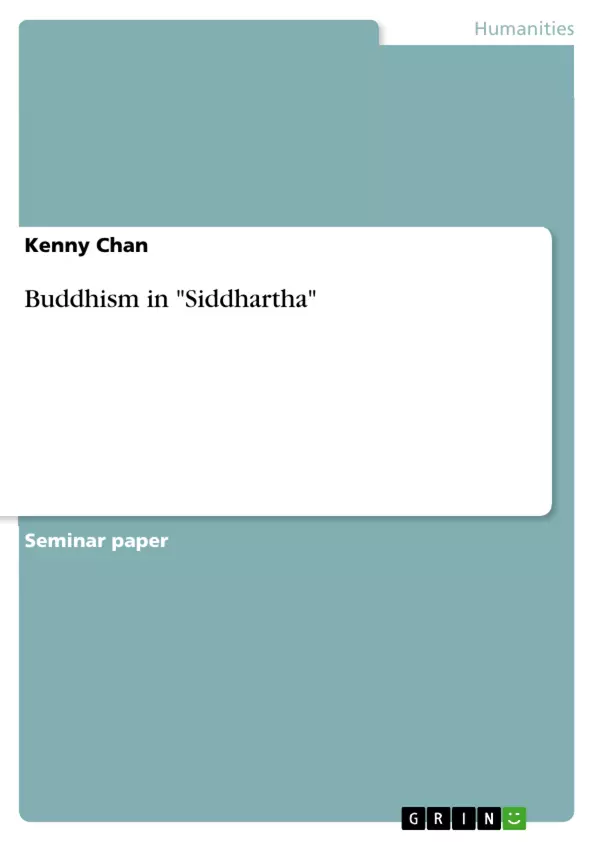This paper examines the use of Buddhism in the book Siddhartha by Hermann Hesse. It takes a look at the different chapters and provides examples to the different aspects of Buddhism.
Inhaltsverzeichnis (Table of Contents)
- With the Samanas
- Gotama
- Samsara
- By the River
- Ferryman
- Om
Zielsetzung und Themenschwerpunkte (Objectives and Key Themes)
This text explores the teachings of Buddhism through the journey of Siddhartha, the protagonist of Hermann Hesse's novel Siddhartha. The author draws parallels between Siddhartha's experiences and the Four Noble Truths, demonstrating how each stage of his journey reflects Buddhist concepts such as suffering, the origin of suffering, the cessation of suffering, and the path to enlightenment. The text also emphasizes the importance of personal experience and awakening in achieving enlightenment.
- The Four Noble Truths
- The Path to Enlightenment
- The Nature of Suffering
- The Importance of Personal Experience
- The Concept of Oneness
Zusammenfassung der Kapitel (Chapter Summaries)
The chapter "With the Samanas" introduces Siddhartha's quest for liberation from suffering. He joins the Samanas, hoping to find an escape from the world's illusions and desires. Siddhartha learns that true liberation requires emptying oneself of all desires and detaching from the self.
In "Gotama", Siddhartha encounters the Buddha and challenges his teachings. He believes that enlightenment cannot be achieved through mere doctrine but through direct experience. Siddhartha argues that personal realization, through the practice of Buddhist principles, is essential for awakening.
The chapter "Samsara" explores Siddhartha's realization that he is trapped in a cycle of existence, a pattern of life and death that repeats endlessly. He recognizes the futility of clinging to material possessions and the importance of letting go of desires to break free from this cycle.
In "By the River", Siddhartha lives with the child-people, losing sight of his original goal. Through introspection and reflection, he experiences a transformation, realizing the illusion of worldly pleasures and the inevitability of aging and death.
The chapter "Ferryman" follows Siddhartha as he becomes a ferryman, learning from the river about timelessness and the interconnectedness of all things. He encounters Kamala, his former lover, and experiences sorrow at her death. However, the river teaches him the concept of oneness, a key element in achieving Nirvana.
Schlüsselwörter (Keywords)
This text centers around the key concepts of Buddhism, including the Four Noble Truths, suffering, the path to enlightenment, personal experience, awakening, detachment, desires, oneness, and Nirvana. The author explores these themes through the protagonist's journey and his interactions with different individuals and experiences.
- Arbeit zitieren
- Kenny Chan (Autor:in), 2008, Buddhism in "Siddhartha", München, GRIN Verlag, https://www.grin.com/document/276723



